Daniel Hunkins Shoe Shop
Introduction
Text-to-speech Audio
Images
Daniel Hunkins Shoe Shop
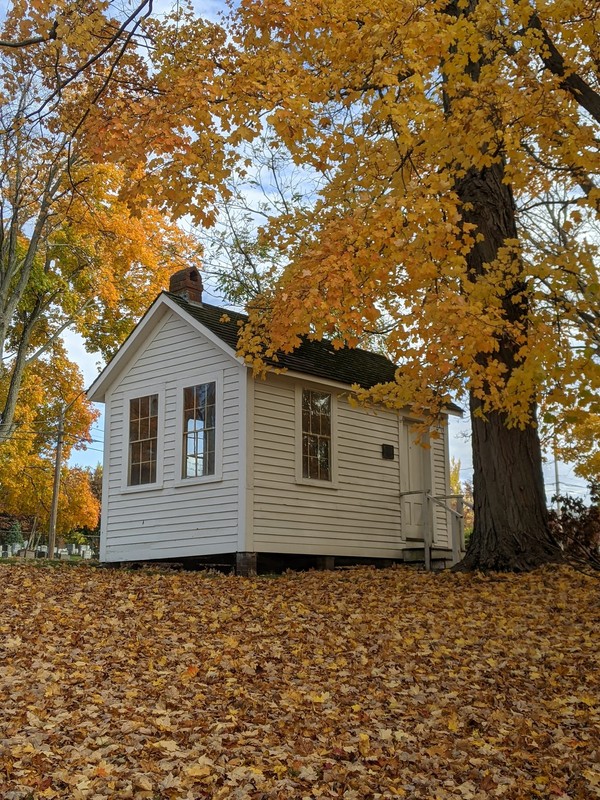
Daniel Hunkins Shoe Shop Interior
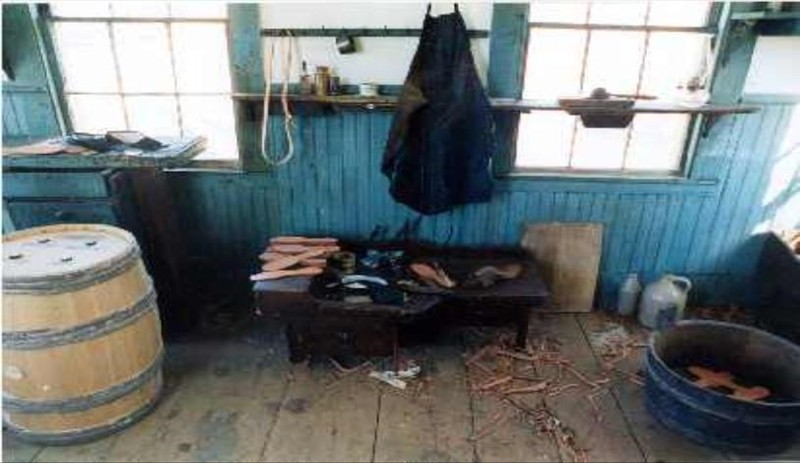
Cordwainer's Lapstone and Last (shoe form)
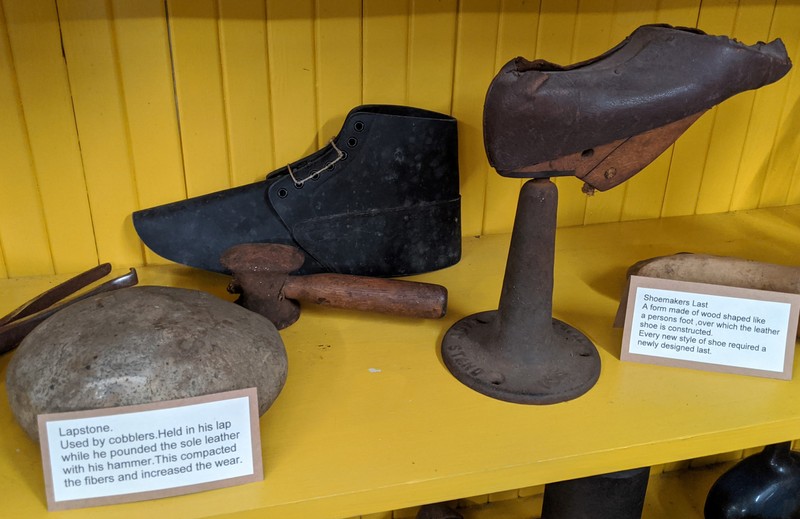
Brogan Shoe
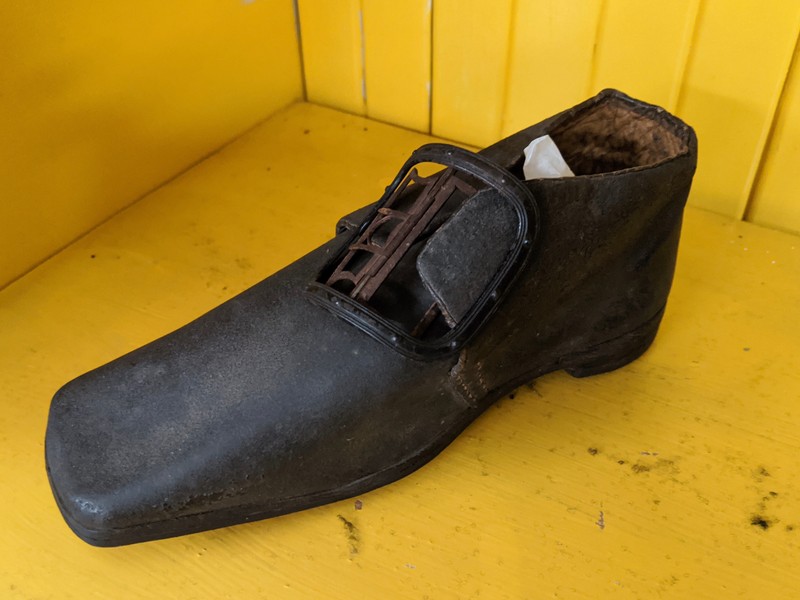
"Ya Gotta Haverhill" Shoe Sculpture at the Buttonwoods Museum
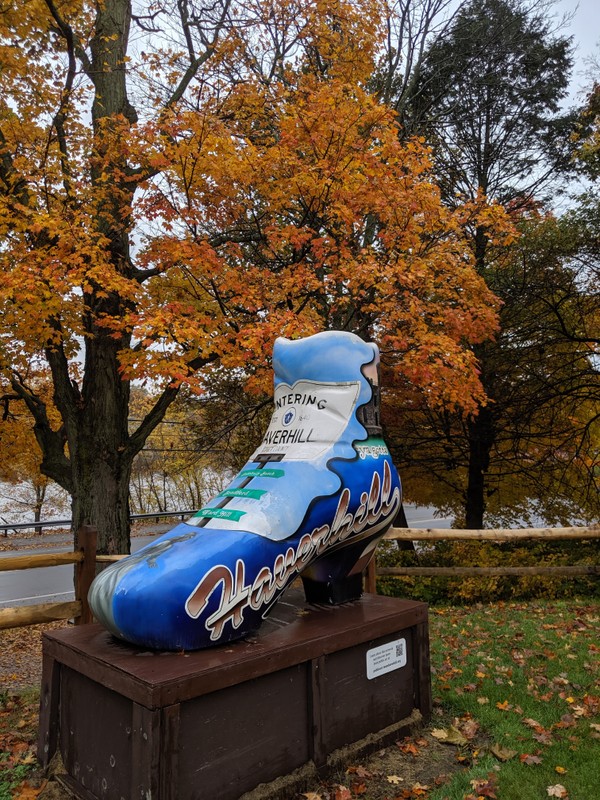
Backstory and Context
Text-to-speech Audio
Shoe production by English settlers began in Haverhill shortly after their arrival; in fact, it was a popular trade all over Essex County. Originally, farmers would make shoes in their homes on days they could not be out working in their fields, like in the winter or when it was too rainy. Their wives and daughters would do the finer stitching and binding at the end of the process. It was a family chore. Eventually, some farmers decided they could make a better living as a cordwainer, or shoemaker. In the 1700s, many of the shoes that were produced in Essex County were a sturdy type of shoe called a brogan. These brogans were then exported and sold to plantations in the southern colonies and the Caribbean for enslaved people to wear.
As shoemaking blossomed into a cottage industry, “ten-footer” shoe shops began to pop up all over Essex County. This one is nine by sixteen feet and was built by Daniel Hunkins in the 1850s towards the end of the time period in which ten-footers were the primary location of shoemaking in Haverhill. Most ten-footers were built and used during the late-1700s through 1860. By 1860, the sewing and stitching machines had been invented that would change shoemaking along with many other industries.
Within the small space of a ten-footer would be three or four men working. At the top of the hierarchy was the master cordwainer. He was the most experienced, he owned the shop, and he was the boss. Beneath him would be one or two journeymen, men in their twenties or early thirties who have completed their education but did not yet have enough experience or money to open their own shops. They worked for wages from the master cordwainer. Finally, at the bottom of the hierarchy was the apprentice. He was a boy between seven and twenty-one who sometimes lived with the master and his family and sometimes lived at home. He was not paid wages for his work, but part of his contract was that the master had to teach the apprentice the trade, including how to read, write, and do basic math. It was the trade school of the day. Child labor issues of the late-1800s came partially from the fact that children were being worked hard in factories without receiving an education or much training for future jobs. Cottage industry apprentices were at least given career training and a basic education.
By the 1850s and 1860s, many shoemakers began to consolidate downtown in larger wooden buildings to share resources. The industry would come to define Haverhill and it gained the moniker of Queen Slipper City by the 1890s due to the fine quality of the ladies’ slip-on shoes produced here. Haverhill was the third largest producer of shoes in the country, after only Lynn and Brockton, Massachusetts.
However, Haverhill's shoemaking days waned after World War II as the factories could not keep up with fast fashion’s rapid style changes each season. The last shoe factory in Haverhill, Allen Shoe, closed in 1991. Throughout Haverhill, statues of shoes (based on Haverhill-made shoes preserved in the Buttonwoods Museum collection) have been erected to remember this history.
Sources
Buttonwoods Museum. Tour Script, March 1st 2018. Accessed August 18th 2020.
